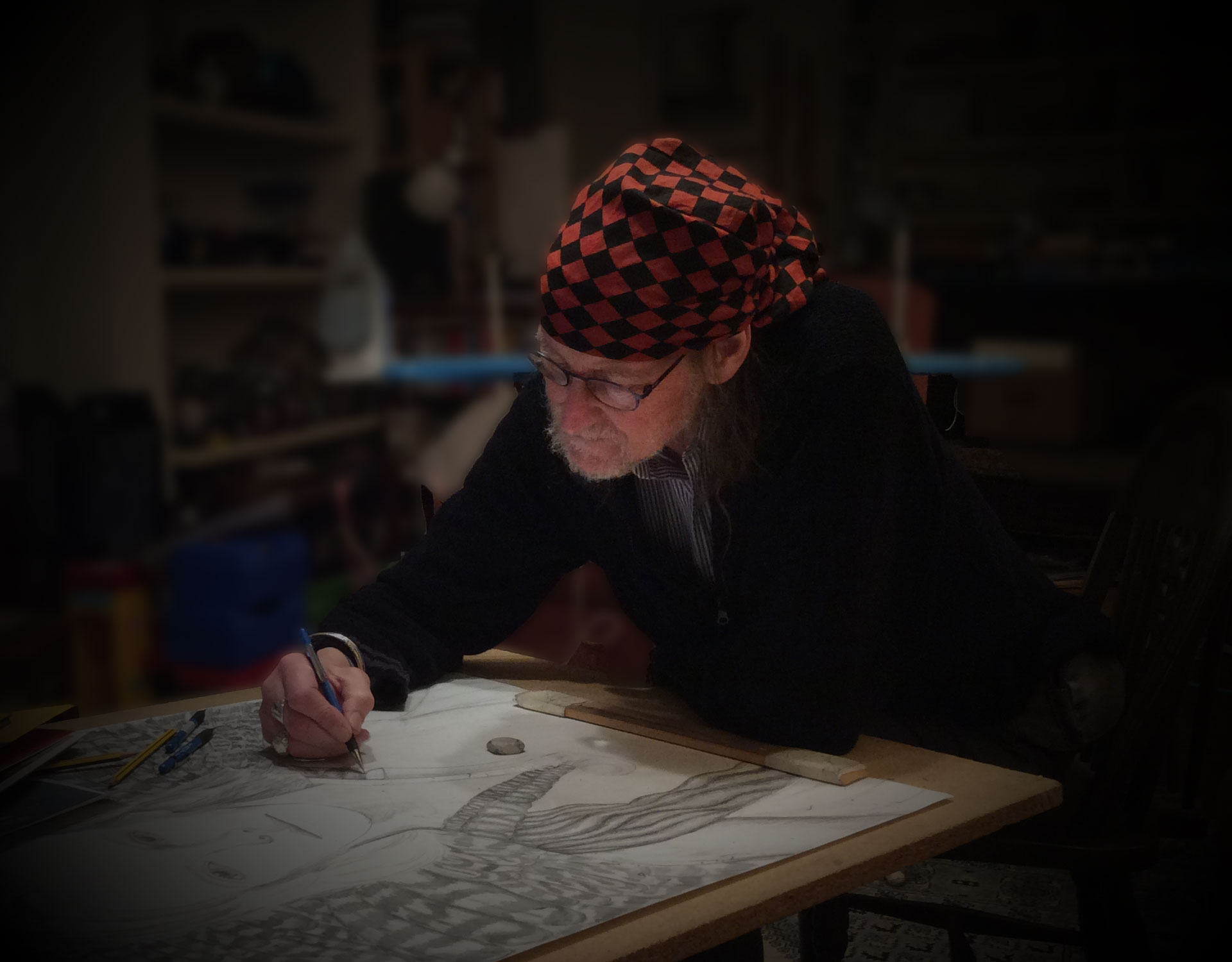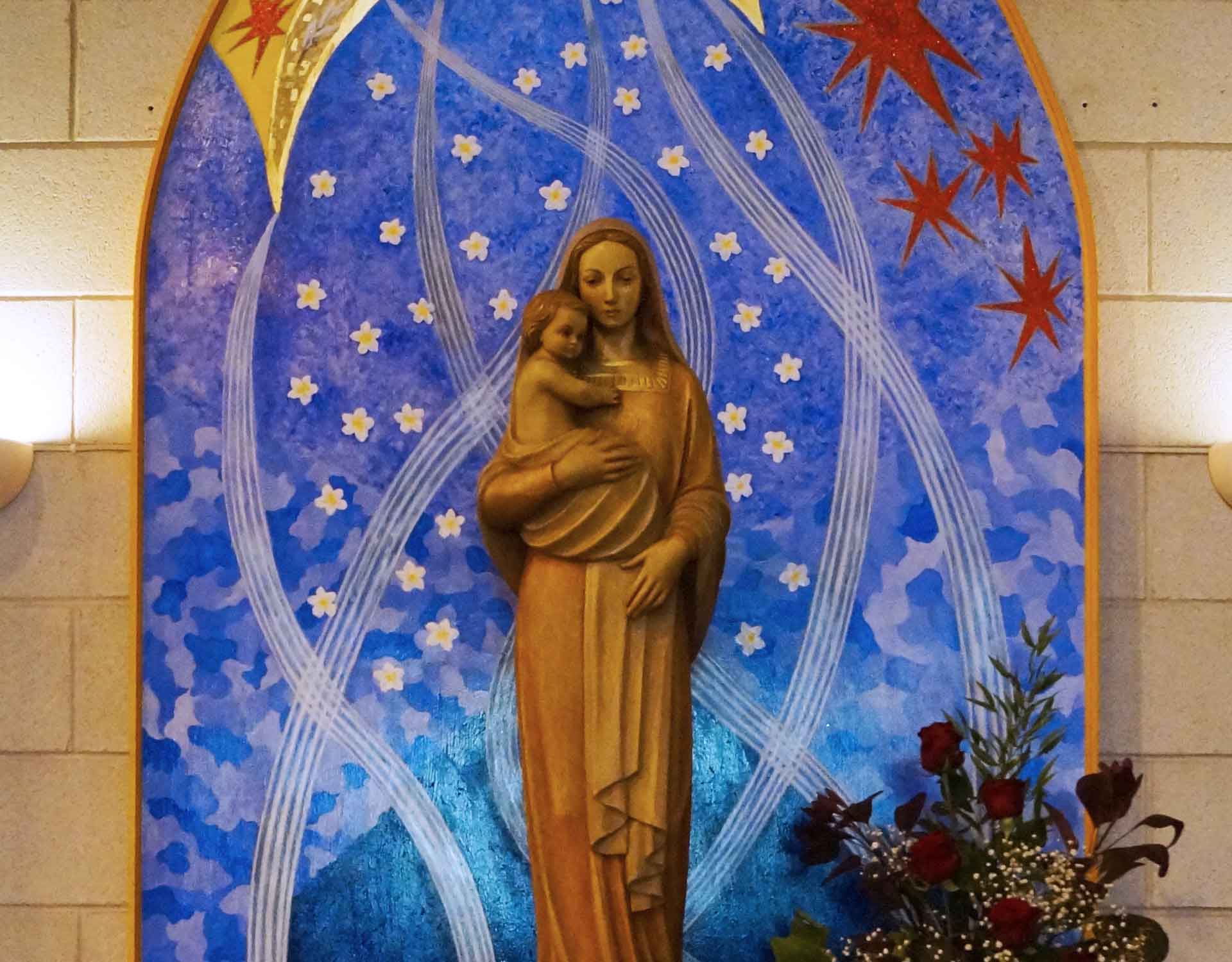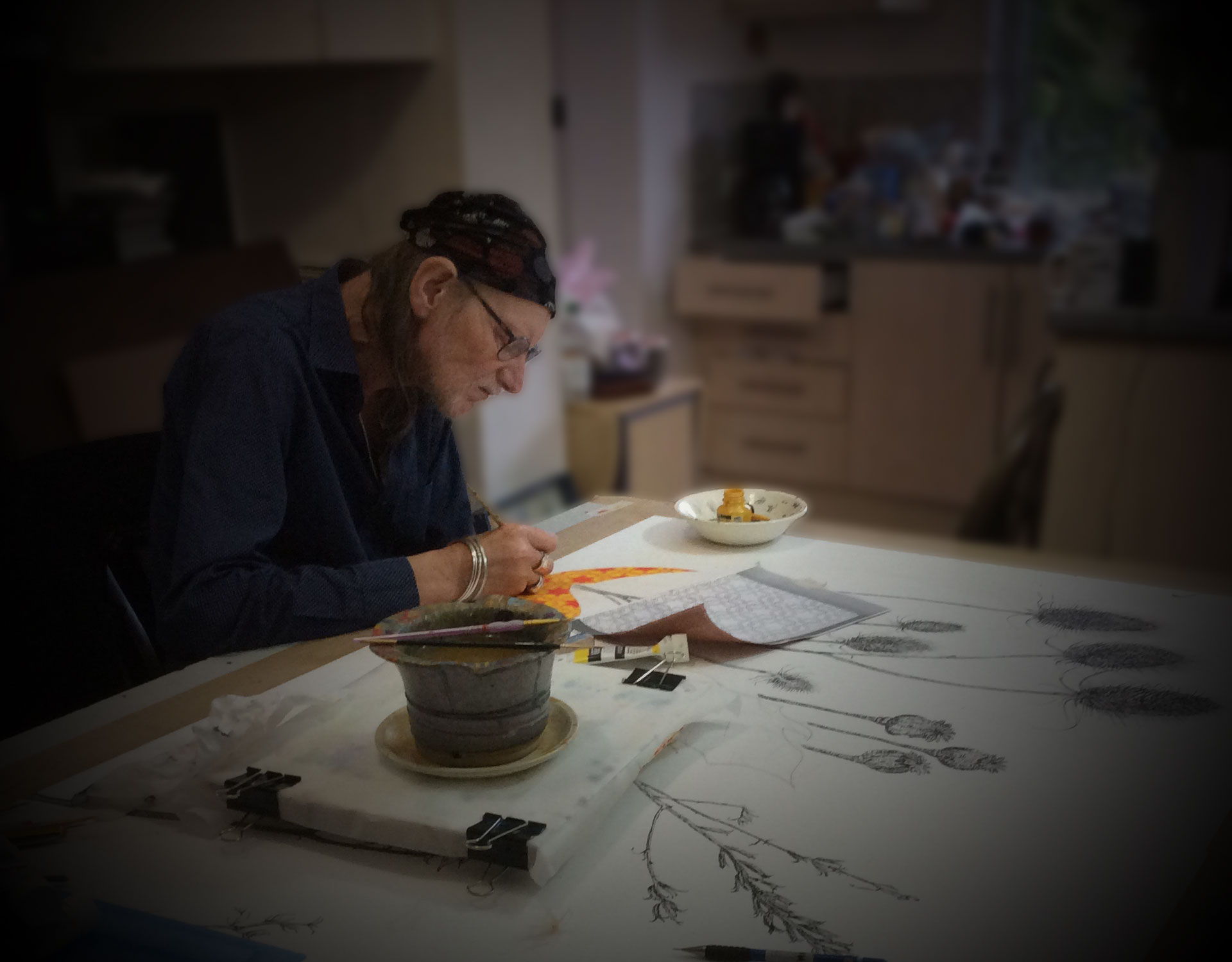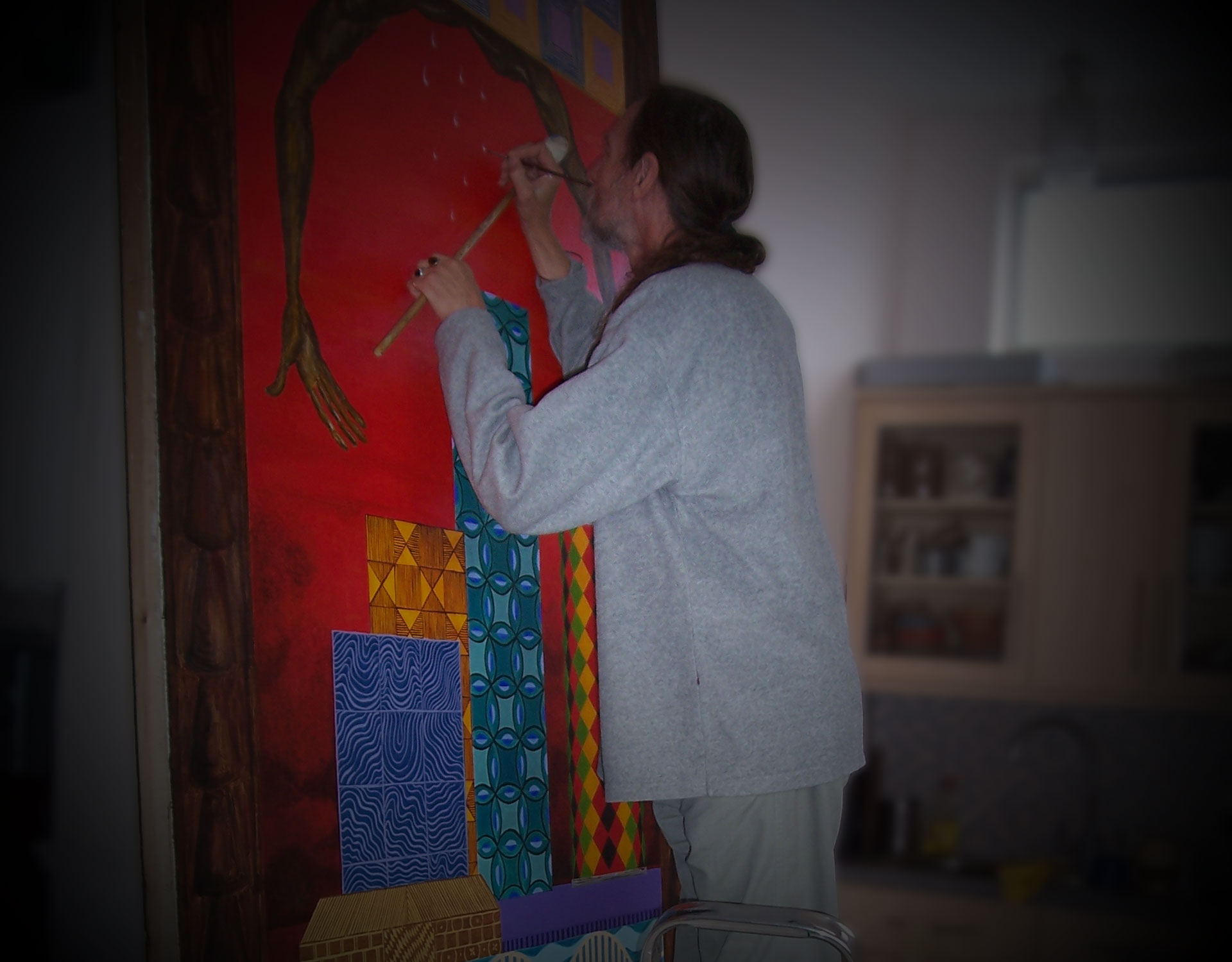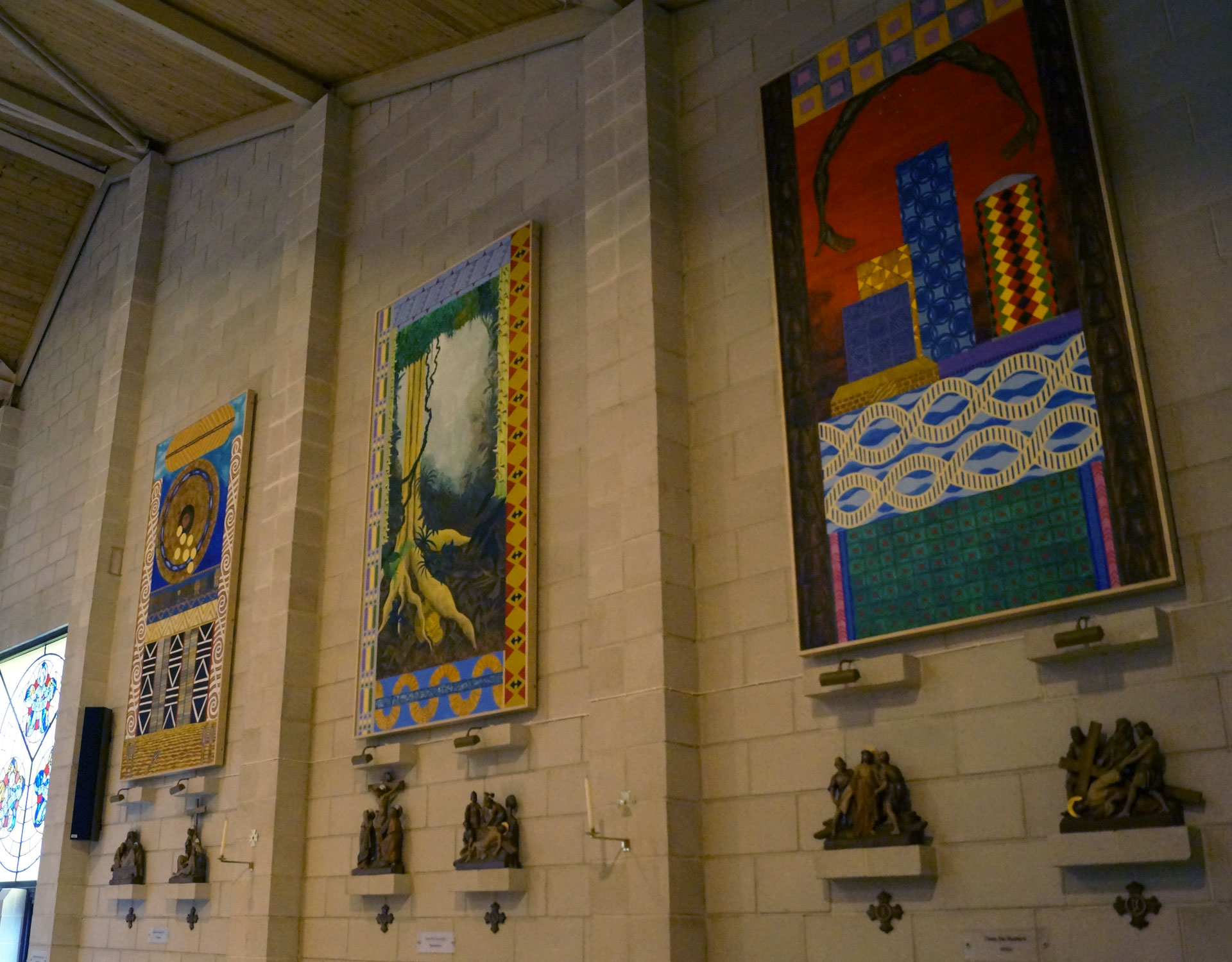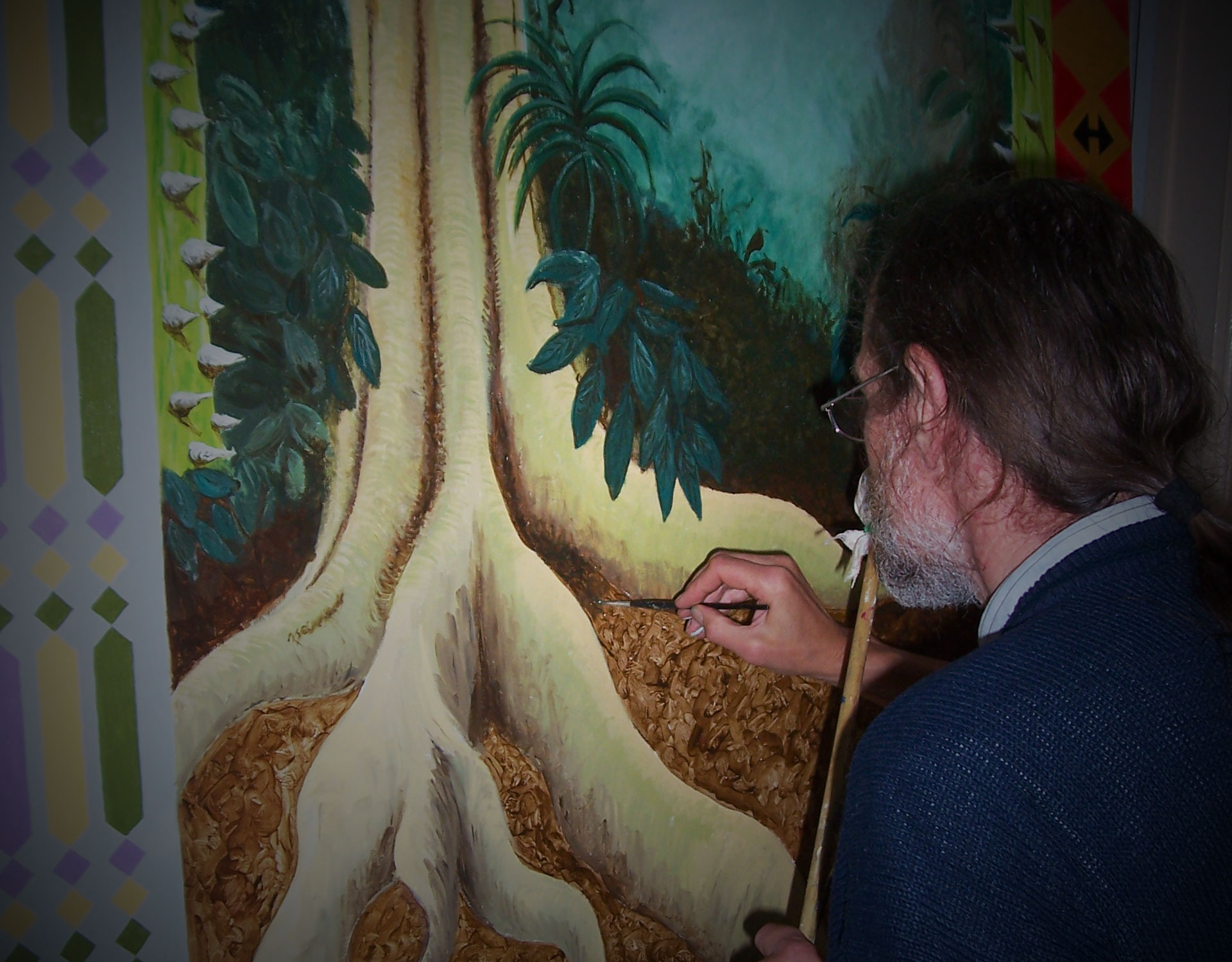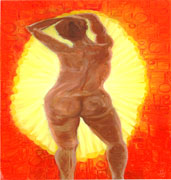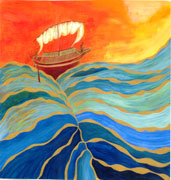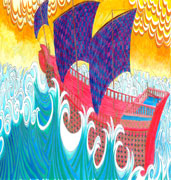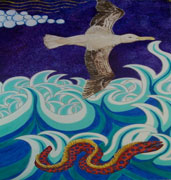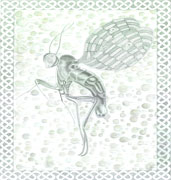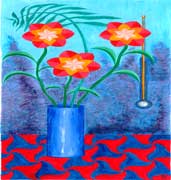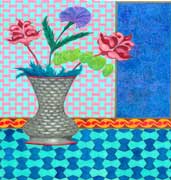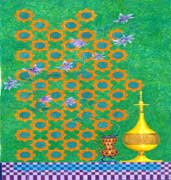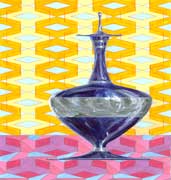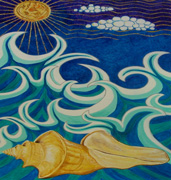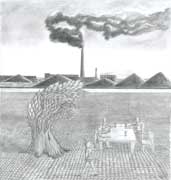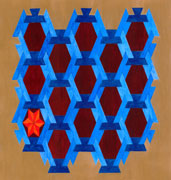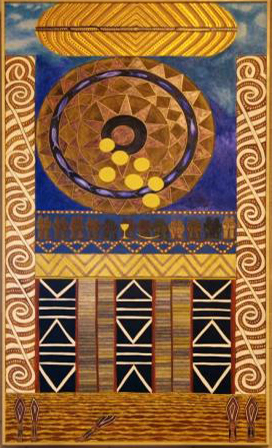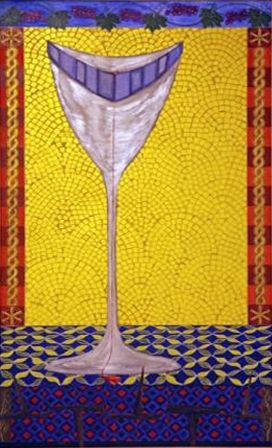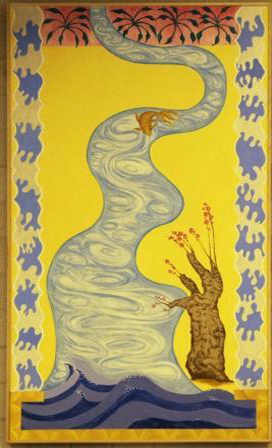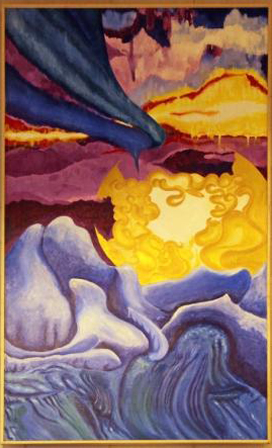Christ the Shepherd
AFRICA
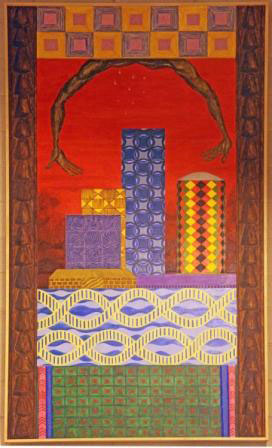
The pattern work on the side edges of this panel is referencing some designs from Yoruba carvings. Somecarvings are placed on doors to important buildings andthis panel stands at the beginning of the series as opening onto the whole six panel meditation. The themeof this painting is the care of Christ for the places wherepeople live as represented by the buildings, land and thewater. The imagery uses patterns from a range of cultural traditions in the African continent decoratingvarious buildings old and new, ancient cultural roots tocontemporary life. The hands and arms of the weepingChrist as he looks over the city recalling the eventrecorded in the Gospel are in a style that is meant to echo some Coptic illustrations.
